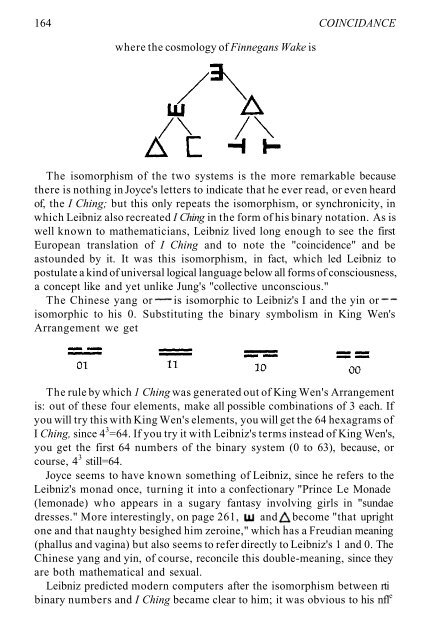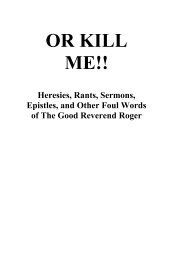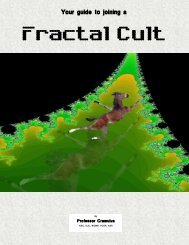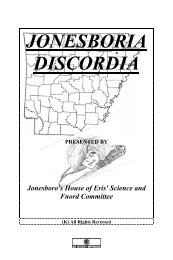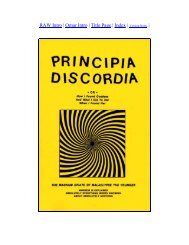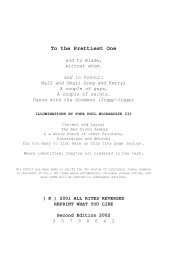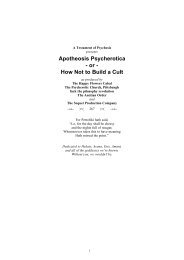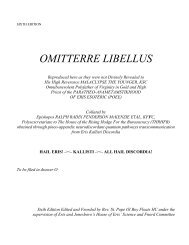Coincidance - Principia Discordia
Coincidance - Principia Discordia
Coincidance - Principia Discordia
You also want an ePaper? Increase the reach of your titles
YUMPU automatically turns print PDFs into web optimized ePapers that Google loves.
164 COINCIDANCE<br />
where the cosmology of Finnegans Wake is<br />
The isomorphism of the two systems is the more remarkable because<br />
there is nothing in Joyce's letters to indicate that he ever read, or even heard<br />
of, the I Ching; but this only repeats the isomorphism, or synchronicity, in<br />
which Leibniz also recreated I Ching in the form of his binary notation. As is<br />
well known to mathematicians, Leibniz lived long enough to see the first<br />
European translation of I Ching and to note the "coincidence" and be<br />
astounded by it. It was this isomorphism, in fact, which led Leibniz to<br />
postulate a kind of universal logical language below all forms of consciousness,<br />
a concept like and yet unlike Jung's "collective unconscious."<br />
The Chinese yang or is isomorphic to Leibniz's I and the yin or<br />
isomorphic to his 0. Substituting the binary symbolism in King Wen's<br />
Arrangement we get<br />
The rule by which 1 Ching was generated out of King Wen's Arrangement<br />
is: out of these four elements, make all possible combinations of 3 each. If<br />
you will try this with King Wen's elements, you will get the 64 hexagrams of<br />
I Ching, since 4 3 =64. If you try it with Leibniz's terms instead of King Wen's,<br />
you get the first 64 numbers of the binary system (0 to 63), because, or<br />
course, 4 3 still=64.<br />
Joyce seems to have known something of Leibniz, since he refers to the<br />
Leibniz's monad once, turning it into a confectionary "Prince Le Monade<br />
(lemonade) who appears in a sugary fantasy involving girls in "sundae<br />
dresses." More interestingly, on page 261, and become "that upright<br />
one and that naughty besighed him zeroine," which has a Freudian meaning<br />
(phallus and vagina) but also seems to refer directly to Leibniz's 1 and 0. The<br />
Chinese yang and yin, of course, reconcile this double-meaning, since they<br />
are both mathematical and sexual.<br />
Leibniz predicted modern computers after the isomorphism between rti<br />
binary numbers and I Ching became clear to him; it was obvious to his nfl e


